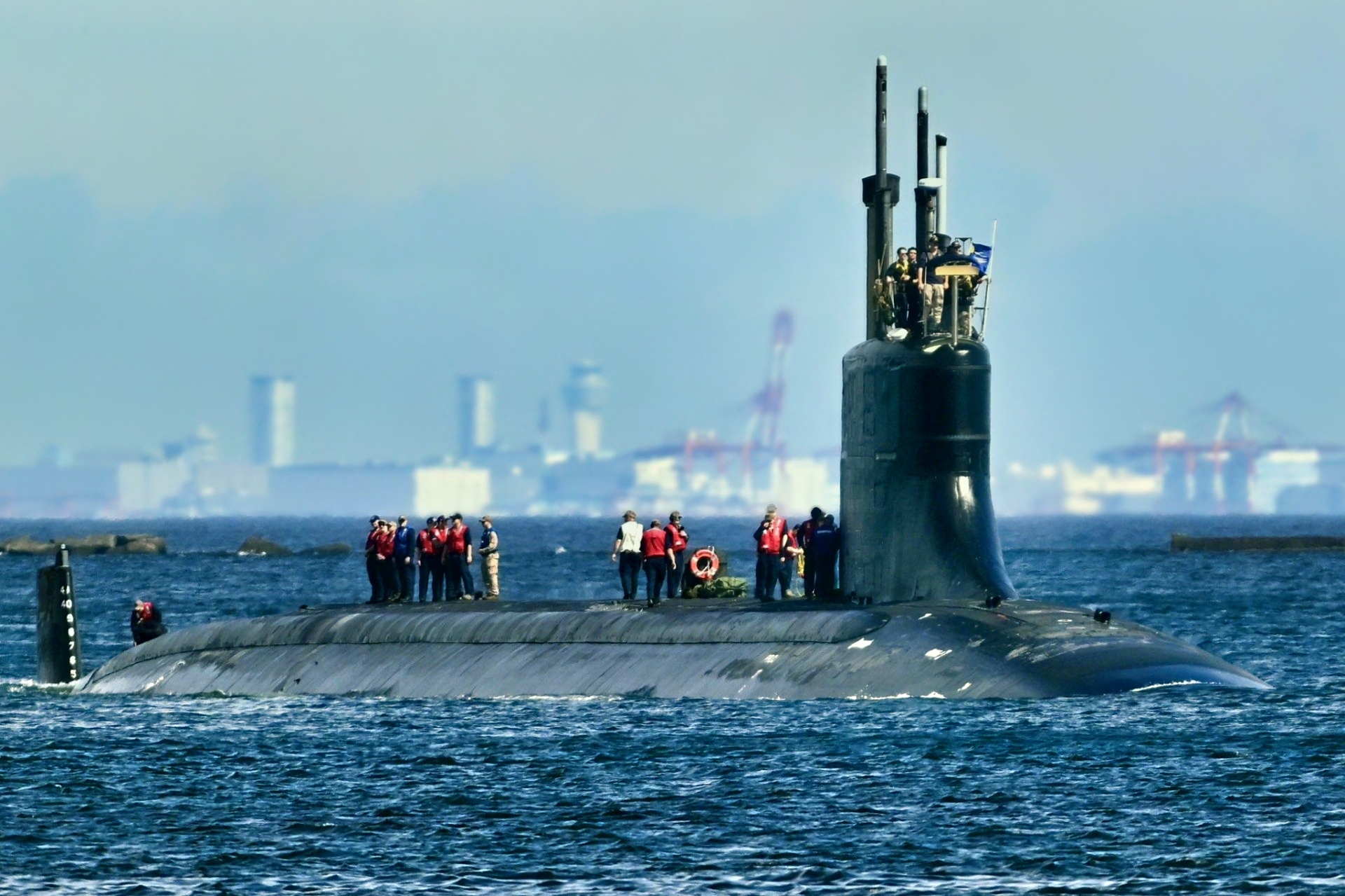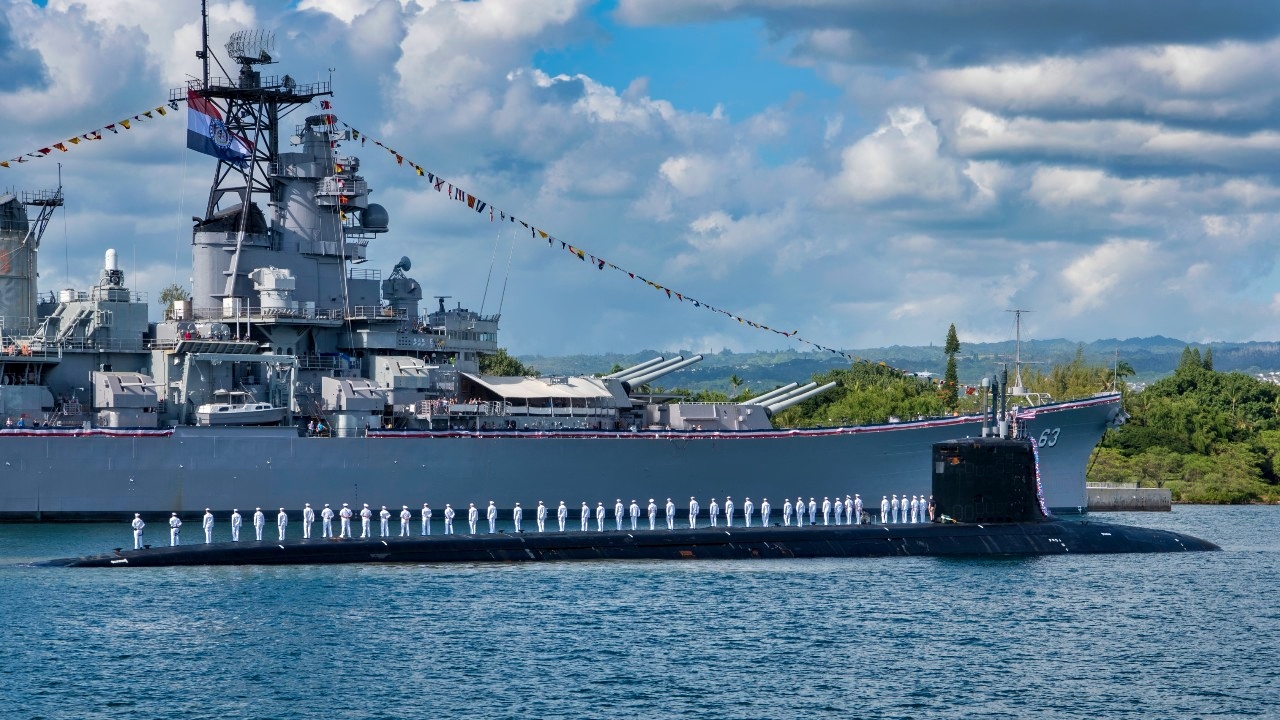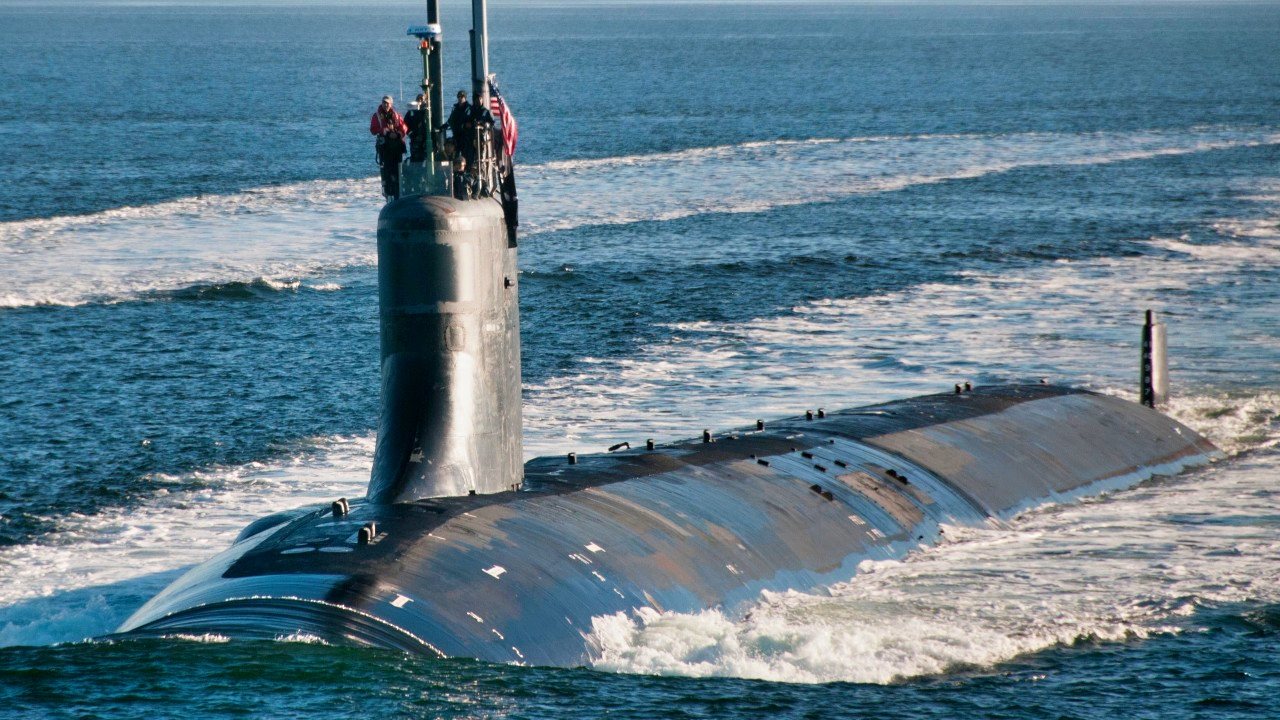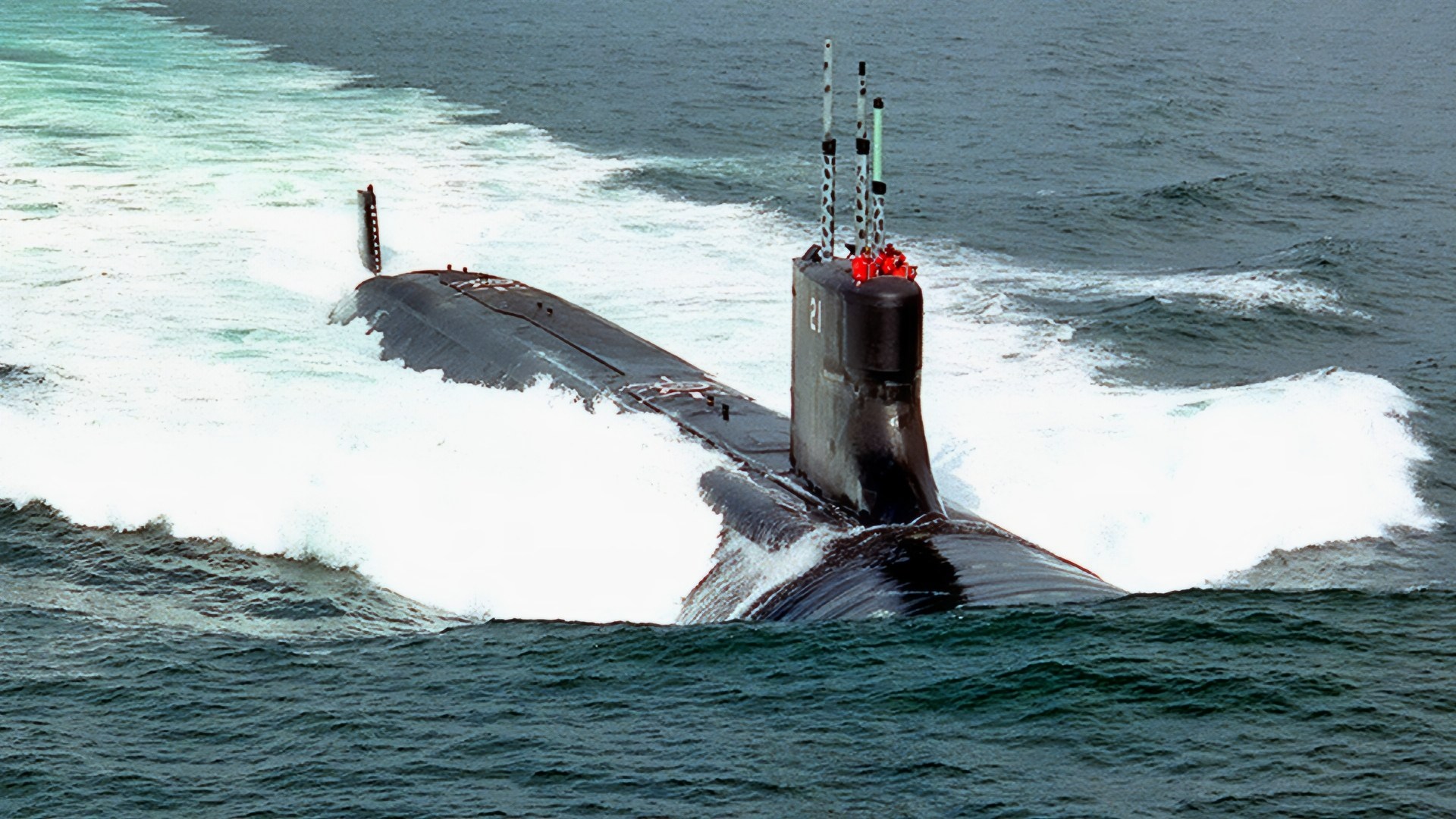Key Points and Summary – The Seawolf-class began as a 29-boat, deep-water “super-sub” built to stalk Soviet submarines under ice, packing HY-100 hulls, big reactors, and heavy weapons.
-Then the world changed. The USSR collapsed, costs spiked to $3.5B per hull, and the program shrank to three boats (Seawolf, Connecticut, Jimmy Carter).

Seawolf-Class Submarine. Image Credit: Creative Commons.

The crew of the Virginia-class fast-attack submarine USS Missouri (SSN 780) render honors to the Battleship Missouri Memorial following a homeport change from Groton, Connecticut. (U.S. Navy photo by Mass Communication Specialist 2nd Class Michael H. Lee/ Released)
-The project was slashed back, just like the F-22 Raptor stealth fighter, to a much smaller number. The subs, just like the F-22 Raptor, were the best at what they did, but were seen as not needed on the same scale. Many experts compare what happened to both programs in a similar light.
-The Navy pivoted to the modular, multi-mission, and far cheaper Virginia class, better suited to littorals, ISR, SOF support, and strike.
-Still, the three Seawolfs remain elite assets as China and Russia grow undersea power.
-The real lesson isn’t just platform choice—it’s scale and shipyard capacity: can the U.S. build enough subs fast enough for the next fight?
Was Canceling the Seawolf-Class the Right Decision?
In the late days of the Cold War, the Seawolf-class was conceived as the U.S. Navy’s most advanced fast-attack submarine.
The plan was to build 29 boats in total, replacing the aging Los Angeles-class and dominating the undersea environment against the Soviet threat. But in the end, only three of the submarines were built.
So, what went wrong? Why did the program fall so dramatically short? And what was this large fleet of submarines envisioned to be, and to achieve?
Meet the Seawolf
Designed in the early 1980s, the Seawolf-class was engineered for deep-water, high-threat operations. It was intended to hunt Soviet submarines under ice and in contested littoral waters (along the shore).
It featured HY-100 steel hulls, advanced S6W nuclear reactors, eight large torpedo tubes, and a weapons load far greater than that of its predecessors.
Its cost per submarine was shocking: it soared to around $3.5 billion, according to some estimates.
And the Navy planned to build 29 boats over a decade to maintain their underwater dominance.

PUGET SOUND, Wash. (Sept. 11, 2017) The Seawolf-class fast-attack submarine USS Jimmy Carter (SSN 23) transits the Hood Canal as the boat returns home to Naval Base Kitsap-Bangor. Jimmy Carter is the last and most advanced of the Seawolf-class attack submarines, which are all homeported at Naval Base Kitsap. (U.S. Navy photo by Lt. Cmdr. Michael Smith/Released)
The project was massive, remarkable in many ways, and expensive. But it simply didn’t pan out as expected.
And there wasn’t one reason why.
Changing Threat Environment and Budgetary Concerns
By the early 1990s, two significant changes forced planners to change course. First, the Cold War ended and the Soviet Union collapsed in 1991.
That reduced the perceived need for an enormous fleet of ultra-high-end attack submarines—a change that affected not just the Navy but the U.S. Air Force, too.
Projects that were intended to strengthen U.S. dominance across multiple domains came to a grinding halt as the Soviet threat disappeared.
Second, the Seawolf program proved far too expensive to proceed with.
Budget constraints, a shift in thinking, and competing priorities squeezed funding, and the program came to an abrupt end. Official records show that production was reduced to only three hulls: USS Seawolf (SSN-21), USS Connecticut (SSN-22), and USS Jimmy Carter (SSN-23)—the latter of which was a modified version with additional capabilities. By the mid-1990s, the Navy officially canceled the 29-strong fleet, and the program came to an end.
What Came Next?
With the Seawolf canceled, the Navy didn’t abandon its undersea efforts. Instead, it pivoted to the Virginia-class attack submarine.
The Virginia-class was designed to be far less expensive, more modular, and suitable for different kinds of missions. It was good for littoral operations, special operations support, intelligence gathering, and even strike missions.
This new platform was designed for more than just deep-ocean anti-submarine warfare—and that made it far more valuable and, in the long term, a more valuable asset for the Navy.
In cost terms, it was cheaper, too. Each Virginia-class sub costs roughly $2 billion in early blocks, which is roughly two-thirds the cost of each Seawolf hull.
Everything about the new class was better for America, and in a new post-Cold War environment, there were fewer large peer adversaries in the open ocean.
The U.S. had the time it needed to step back and develop new platforms better suited to its needs.
But the Seawolf still matters. Although only three were ever built, it remains one of the quietest and most capable submarines in the entire U.S. fleet.
The presence of these three subs provides the Navy with truly elite platforms that can operate in high-threat environments to this day. They are instrumental now as China and Russia invest heavily in undersea warfare. Some have argued, in fact, that had the whole fleet been built as intended, the United States today would face fewer submarine shortfall risks – but alas, it wasn’t meant to be.
That said, the limited number of hulls means the class is treated today as a strategic asset rather than a mass-produced workhorse.
The legacy of the Seawolf-class hasn’t been forgotten, especially as the U.S. Navy now races to finalize a major submarine contract for 15 new boats (10 Virginia-class and five Columbia-class).
The rush to rebuild industrial capacity reflects the risk that the Seawolf decision flagged, too: that elite platforms only matter if they can be produced at scale when maritime strategy demands it.
Threats today are changing—and so too are budgets. But shipyard capacity is arguably the most critical variable at this stage.
The Navy is moving on to its next chapter of undersea power, but with limited ability to build new ships, the question is this: Can we make what we need quickly enough? And are we really prepared for a major war?
About the Author:
Jack Buckby is a British author, counter-extremism researcher, and journalist based in New York. Reporting on the U.K., Europe, and the U.S., he works to analyze and understand left-wing and right-wing radicalization, and reports on Western governments’ approaches to the pressing issues of today. His books and research papers explore these themes and propose pragmatic solutions to our increasingly polarized society. His latest book is The Truth Teller: RFK Jr. and the Case for a Post-Partisan Presidency.
More Military
Northrop Grumman Is Likely Winner of F/A-XX, But Big Questions Remain
USS United States: The Aircraft Carrier Designed to Launch Bombers
The U.S. Air Force’s B-21 Raider Bomber Nightmare Has Just Begun
How Long Can a Nuclear U.S. Navy Aircraft Carrier Stay in Service?
The Air Force’s B-52 Stratofortress Bomber ‘Nightmare’ Is Real










